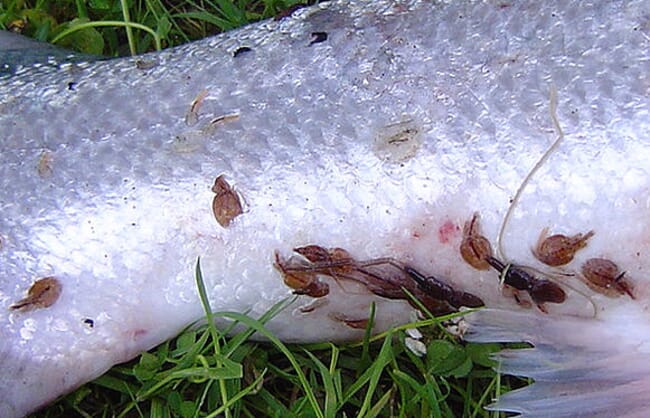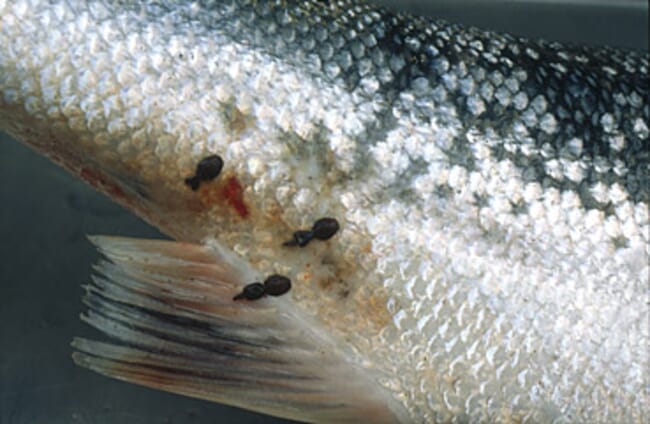What are sea lice?
"Sea lice" is a term used to describe many species of ectoparasitic copepods of the genera Lepeophtheirus and Caligus. The common name "salmon lice" is frequently used to refer to L. salmonis, which has become an economically important parasite in salmon farming. Another important salmon louse in salmonid and marine fish farming is Caligus elongatus. In Scotland there are two other species of lice that may be a problem for cultured fish, Caligus curtis and Lepeophtheirus hippoglossi.

Where and when might it occur?
L. salmonis is very host-specific, preferring Atlantic salmon (Salmo salar L.), and is commonly found in the Northern Hemisphere. C. elongatus, is important in salmonid and marine fish farming and has a wider range of host species. These two species are commonly found on wild salmonids. They are usually found in low numbers, although L. salmonis may cause damage to wild Atlantic salmon and sea trout (Salmo trutta L.) if present in large numbers. In Scotland, C. curtis has been reported from wild cod (Gadus morhua), and L. hippoglossi is associated with wild halibut, although it has been anecdotally reported from farmed halibut elsewhere.
Diagnosis
Salmon lice feed on host mucus, skin and blood and, when present in high numbers, cause serious damage to the skin, which can result in host death. The adult stages are highly visible on infested fish. Precise identification of sea lice can be achieved by examination of the parasites under a microscope.

Treatment and control
It is difficult to prevent infestation of farmed salmonids because sea lice are ubiquitous in the marine environment. However, control is possible through the use of licensed veterinary medicines and cleaner fish, such as wrasse and lumpfish that feed on sea lice.
Veterinary medicines can be either applied as a bath or via feed. Other measures include the coordination of fallowing and stocking within agreed management areas.
Vaccination has been proposed as a means of controlling salmon lice, although there seems little prospect of a licensed vaccine in the near future.
Source: Marine Scotland
Crown copyright 2010
Marine Scotland is an agency of the Scottish Executive
